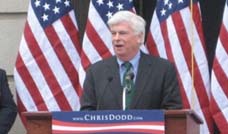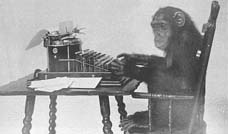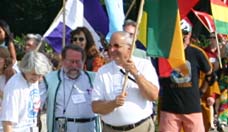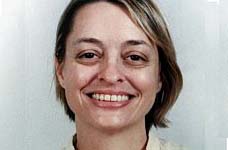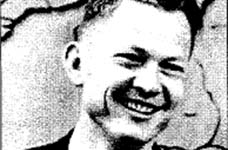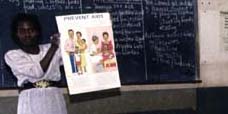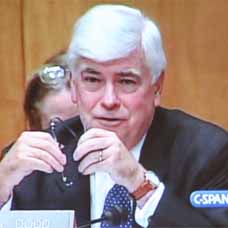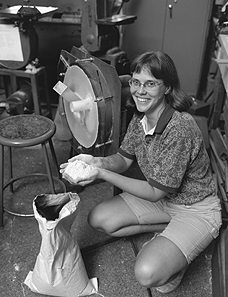
Smith is a trailblazer who sees design as more than aesthetic pursuit. To her, it should be a participatory process that improves the lives of the world's most impoverished people, those at the so-called "base of the pyramid" (BOP). In her role as head of the 'D-Lab' at MIT, Smith has chosen to intertwine design and development in her everyday work. IDDS demonstrated that the resulting blend can be remarkable. Teams devised their own projects based on their market knowledge and insights. Many expressed the intent to return to their local communities after IDDS to spread their innovations among their neighbors and peers. These individuals were empowered to drive the front-end of the process as well as to earn the downstream reward. It's a rare thing to see a Western institution that directly engages its intended beneficiaries from the Global South, not as passive recipients, but as active partners. Other organizations would be well-advised to emulate this model. Inventor Amy Smith teaches at the Massachusetts Institute of Technology and served as a Peace Corps Volunteer in Botswana.
Design Flourishes at Amy Smith's MIT Summit
South-South Design Flourishes at MIT Summit
Jonathan Greenblatt
August 14, 2007 7:30 AM
Article Photo
Walking the campus of the Massachusetts Institute of Technology earlier this week, I had one of those rare experiences that rewards your faith in human potential. I had the good fortune to attend the first International Development Design Summit (IDDS), a brainchild of MIT professor and MacArthur Foundation "genius grant" winner Amy Smith. It was a moving experience.
I initially met Smith at the 2006 TED Conference. She blew the audience away with an extraordinary presentation on an appropriate technology. She spoke of the repurposing of discarded, carbonized bio-materials like used corn cobs
into simple yet effective briquettes. It might sounds trivial, but a room packed with extremely seasoned entrepreneurs and experienced investors gave Smith a standing ovation after her presentation. The scorched cobs were undeniably primitive, yet their elegant simplicity and revolutionary potential was obvious to all.
Smith is a trailblazer who sees design as more than aesthetic pursuit. To her, it should be a participatory process that improves the lives of the world's most impoverished people, those at the so-called "base of the pyramid" (BOP). In her role as head of the 'D-Lab' at MIT, Smith has chosen to intertwine design and development in her everyday work. IDDS demonstrated that the resulting blend can be remarkable.
Co-sponsored by CalTech and Olin College of Engineering, IDDS was not a competition, but a program that attracted a highly diverse mix of participants: students and scientists, carpenters and creative. Smith also raised funds for IDDS from a handful of supporters, including the Sabeer Bhatia Foundation, the eponymous philanthropy started by the Hotmail founder. This assistance helped bring individuals from a range of developing countries to the event. Smith did not launch a marketing campaign for IDDS; solely through word of mouth, people from locales as disparate as Brazil, Ghana, Haiti, Pakistan, and Tibet converged on MIT for the program: a month of intensive collaboration and learning. Participants self-organized into teams and were paired with mentors from top-notch design firms such as Continuum and IDEO. IDDS's rich classroom experience involved case studies and lectures taught by MIT faculty, as well as development experts like Paul Polak of IDE and Jock Brandis of the Full Belly Project. But the "students" at these sessions easily could have been the teachers.
Teams devised their own projects based on their market knowledge and insights. Many expressed the intent to return to their local communities after IDDS to spread their innovations among their neighbors and peers. These individuals were empowered to drive the front-end of the process as well as to earn the downstream reward. It's a rare thing to see a Western institution that directly engages its intended beneficiaries from the Global South, not as passive recipients, but as active partners. Other organizations would be well-advised to emulate this model.
IDDS put forth incredibly basic design criteria. Teams were required to create innovations to serve a clear development need, to use locally available materials and to do so at a low cost. Students were not asked to create business models for their inventions, but simply to use the four-week period to create working prototypes and demonstrate proof of concept. Nearly all of the end-products offered fresh takes on old problems:
* One team created an impressive off-grid refrigeration unit tailored for rural areas. Using little more than burlap, PVC piping and an almost imperceptible drip supply of water, the device employed an evaporative cooling method to store perishable food. Designed for highly intemperate environments, the initial tests demonstrated that this simple prototype could achieve temperature reductions of up to four degrees Celsius. This might seem small, yet such a shift could facilitate food preservation for communities around the world and change lifestyles as a result.
* Another group, Green Team, created an amazing low-cost greenhouse from recycled and widely available materials. Using ostensible detritus such as used soda cans, discarded PET water bottles, chicken wire, and PVC piping, the team created a highly modular, easy-to-install device with the potential to improve food security and increase agricultural productivity. There were microbial power sources, efficient grinding devices constructed from bicycle parts, and an adobe oven created to
eliminate indoor smoke inhalation. A full list of IDDS inventions is available
href="http://www.iddsummit.org/articles/final-presentations/">here.
Safiri-SODIS water transport deviceI was particularly struck by a product designed to enable highly efficient and hygienic water transport, which is virtually non-existent in the developing world. Typically, women and children in rural settings often can journey up to six miles daily to retrieve water for their families. They frequently return to their homes carrying between 20 to 40 pounds on their backs or heads in unsound, unwieldy and
often unclean vessels such as petroleum cans or ceramic pots. It's a ritualized behavior that sustains the cycle of disease, reduces human productivity and creates tremendous physical strain.
An IDDS team created a striking device, SODIS Safiri, to deal with these challenges. It obviates the need for awkward storage vessels; instead, water is carried in ergonomic, low-cost plastic pouches that can be worn like apparel. Imagine a "backpack" that can be manufactured for five dollars and efficiently bear up to four liters, or a poncho that can carry twice that amount at a cost of only seven dollars.
Along with improving transport efficiency, the SODIS Safiri device capitalizes on the otherwise non-productive return journey: the transparent design facilitates solar disinfection of the water so that the water can be consumed upon arrival at the village. While some contaminants cannot be handled solely by ultraviolet rays, this zero-cost approach could be sufficient in many non-industrial locations where basic microbial contamination creates diseases.
Safiri SODIS illustrates of the power of IDDS. This team did not aspire to eradicate the entire global water crisis in one brilliant stroke. Instead, they created a clever, low-cost, highly replicable product whose adoption could instantly benefit hundreds of millions of people. I wonder whether the team already has heard from a water-oriented, BOP-focused multinational corporation like Unilever or a progressive NGO like Water Partners International, which likely would see the value of the Safiri SOIDS device to satisfy their for-profit or non-profit ambitions.
It would be an understatement to describe this first installment of IDDS as a modest event. A trail of hand-made, scotch-taped signs literally pointed visitors to the worn-out classroom where presenters explained their projects. Teams displayed their prototypes on cheap folding tables. The refreshments were basic: no caviar or champagne, just brownies and fruit. Most people didn't even bother with name tags.
Even fewer had business cards.
But while IDDS didn't provide the glitz of the World Economic Forum or the Clinton Global Initiative, it offered something even more rewarding: relevance. The chattering classes often come together in illustrious settings such as the yearly Davos conference to pontificate about the world's problems and contribute unimaginable sums of money toward often nebulous ends. In contrast, the very ordinary people at IDDS shed light on the extraordinary possibilities of design to change the world, not in the distant future, but here and now, with their own hands.
It's a rare treat to find yourself at an event where the participants don't just talk about solving the far-off challenges of other people at some point in the future. I imagine that IDDS will evolve into something much grander in the coming years, as word gets out about this unique program. But hopefully the essential nature of the gathering won't change. At IDDS, people are creating solutions to their own problems and doing so in front of you. Literally.
See you in Cambridge next August.







